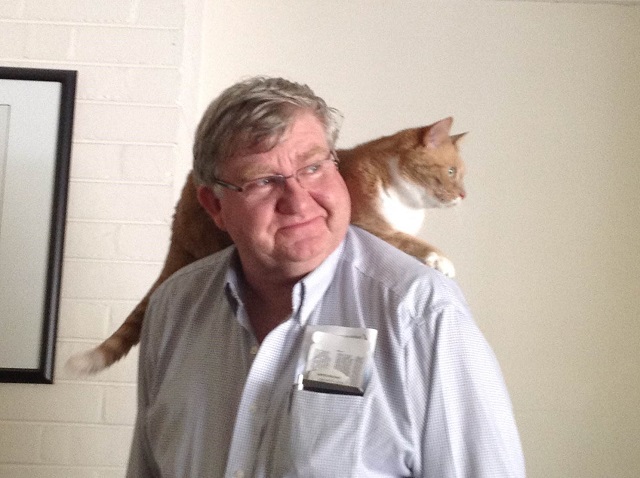George C. Scott played the somewhat crazy Chairman of the Joint Chiefs of Staff, General Buck Turgidson, in the dark cold war comedy Dr Strangelove.
One of Buck’s great lines was ‘what’s cooking on the threat board?’—a large map in the war room that showed where US and Russian planes were located.
Most times when I’d ring Mike Rothery, I’d start with Buck’s question. That would inevitably set Mike off on a brilliant stream of analysis on current and emerging threats to our nation’s security, and what we needed to do to respond and be relevant to the many ‘wicked’ problems across the security spectrum.
Mike had over 30 years of distinguished service in the public sector. Most recently, he led the National Security Resilience Policy Division in the Attorney-General’s Department.
Mike was the most exceptional freethinker on national security that I’ve met. He was an outstanding public servant who worked tirelessly to break down the barriers between organisations involved in national security.
He was brilliant at doing exactly the same thing when it came to the world of ideas by finding connections, challenging conventional wisdoms and looking at the big picture in many areas of national security. He was never ‘rank conscious’.
He had an unusual mix of subject matter knowledge and thinking at the systems level, but constantly sought practical solutions to public policy problems. He wasn’t bound by process either and, at least from my perspective from outside the public service, he never appeared intimidated by the fear of failure in developing policy approaches to emerging security problems. He pushed policy boundaries, but without ego: Mike always had a strong focus on how to make a difference.
I first got to know Mike when, not long after 9/11, I convened a series of conferences for the Australian Defence Force Academy looking at what governments, businesses, organisations and individuals could do to manage ongoing threats to public safety.
Mike was an incredibly generous source of ideas and contacts. He spoke at many of those events and always rated as one of the most compelling conference speakers.
From our earliest meeting, Mike impressed me with his powerful intellect as he set about analysing and generating practical responses to a whole range of security problems.
His views were always conveyed clearly and with heartfelt passion, all the more compelling as they were combined with his strong and wonderfully engaging personality and wry sense of humour. Mike had scores of admirers in Defence, the intelligence community, academia and business.
He was heavily involved in advancing one of the key tenets of national security; protection of critical infrastructure in a new era of industry-owned infrastructure. He led the creation of the Trusted Information Sharing Network for Critical Infrastructure Protection. He sponsored many research projects through a national science and security technology program. He brought together several Australian government agency capabilities to create the Critical Infrastructure Program for Modelling and Analysis, which uses modelling and simulation to provide analysis of potential natural or human-induced disruptions to critical infrastructure.
He drove much of the relationship with the industry-government security sector, always ensuring the focus was on partnership and not regulation.
Mike had a vision of professionalising those who work in the security sector and was generous with his time in helping to develop a competency model for the security profession. That work has led to the creation of the security professionals registry.
Mike understood the imperatives of cyber security before most people and established CERT Australia.
As an academic on security matters, I had firsthand experience of Mike’s great support linking researchers to government through the Research Network for a Secure Australia. Mike chaired the RNSA Advisory Board where he shared with researchers not just government’s views, but also thoughtful advice on how the academic community could best inform public policy.
Mike was a key force behind the move from a compliance approach in protective security to a principles and risk-based approach and ushered in the Protective Security Policy Framework in 2010. He was instrumental in shifting the security debate from disaster resilience to broader national resilience, including spreading the focus to business continuity and emergency management.
Mike was awarded the Public Service Medal in 2014 in recognition of his great service in delivering strategies that protect the community and improve the national capacity to respond to and recover from national security events. He was one of the first recipients of the Australian Security Medal, awarded by a group of Australian senior security managers, for his contribution to security professionalism.
I always felt that Mike would have been successful in a range of fields. So we were indeed fortunate that he chose to serve his country by advancing public policy in national security. It’s incredibly sad that Mike didn’t have the opportunity to continue to do so, or to take up other opportunities that no doubt would have presented themselves to him. He would have been 52 on 11 February.
All of us in the national security research community benefited from Mike’s enormous intellect, his generous sharing of ideas and his extraordinary vision. He was a splendid public servant and a very decent human being. Vale, friend.


